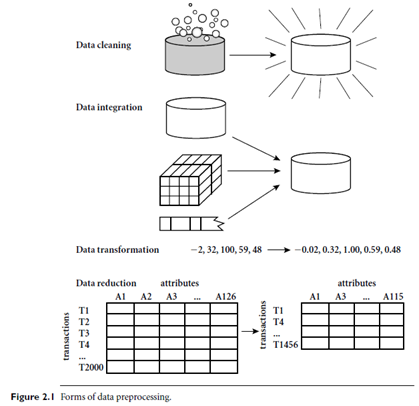SKEDSOFT
Introduction: Incomplete, noisy, and inconsistent data are commonplace properties of large real world databases and data warehouses. Incomplete data can occur for a number of reasons. Attributes of interest may not always be available, such as customer information for sales transaction data. Other data may not be included simply because it was not considered important at the time of entry. Relevant data may not be recorded due to a misunderstanding, or because of equipment malfunctions. Data that were inconsistent with other recorded data may have been deleted.
There are many possible reasons for noisy data (having incorrect attribute values). The data collection instruments used may be faulty. There may have been human or computer errors occurring at data entry. Errors in data transmission can also occur. There may be technology limitations, such as limited buffer size for coordinating synchronized data transfer and consumption. Incorrect data may also result from inconsistencies in naming conventions or data codes used or inconsistent formats for input fields, such as date. Duplicate tuples also require data cleaning.
 Data cleaning routines work to “clean” the data by filling in missing values, smoothing noisy data, identifying or removing outliers, and resolving inconsistencies. If users believe the data are dirty, they are unlikely to trust the results of any data mining that has been applied to it. Furthermore, dirty data can cause confusion for the mining procedure, resulting in unreliable output. Although most mining routines have some procedures for dealing with incomplete or noisy data, they are not always robust. Instead, they may concentrate on avoiding over fitting the data to the function being modeled.
Data cleaning routines work to “clean” the data by filling in missing values, smoothing noisy data, identifying or removing outliers, and resolving inconsistencies. If users believe the data are dirty, they are unlikely to trust the results of any data mining that has been applied to it. Furthermore, dirty data can cause confusion for the mining procedure, resulting in unreliable output. Although most mining routines have some procedures for dealing with incomplete or noisy data, they are not always robust. Instead, they may concentrate on avoiding over fitting the data to the function being modeled.
Getting back to your task at All Electronics, suppose that you would like to include data from multiple sources in your analysis. This would involve integrating multiple databases, data cubes, or files, that is, data integration. Yet some attributes representing a given concept may have different names in different databases, causing inconsistencies and redundancies. For example, the attribute for customer identification may be referred to as customer id in one data store and cust id in another. Naming inconsistencies may also occur for attribute values. For example, the same first name could be registered as “Bill” in one database, but “William” in another, and “B.” in the third. Furthermore, you suspect that some attributes may be inferred from others (e.g., annual revenue). Having a large amount of redundant data may slow down or confuse the knowledge discovery process. Clearly, in addition to data cleaning, steps must be taken to help avoid redundancies during data integration. Typically, data cleaning and data integration are performed as a preprocessing step when preparing the data for a data warehouse. Additional data cleaning can be performed to detect and remove redundancies that may have resulted from data integration.
Getting back to your data, you have decided, say, that you would like to use a distance based mining algorithm for your analysis, such as neural networks, nearest-neighbor classifiers, or clustering.1 Such methods provide better results if the data to be analyzed have been normalized, that is, scaled to a specific range such as [0.0, 1.0]. Your customer data, for example, contain the attributes age and annual salary. The annual salary attribute usually takes much larger values than age. Therefore, if the attributes are left un-normalized, the distance measurements taken on annual salary will generally outweigh distance measurements taken on age. Furthermore, it would be useful for your analysis to obtain aggregate information as to the sales per customer region—something that is not part of any pre-computed data cube in your data warehouse. You soon realize that data transformation operations, such as normalization and aggregation, are additional data preprocessing procedures that would contribute toward the success of the mining process
Figure 2.1 summarizes the data preprocessing steps described here. Note that the above categorization is not mutually exclusive. For example, the removal of redundant data may be seen as a form of data cleaning, as well as data reduction.
In summary, real-world data tend to be dirty, incomplete, and inconsistent. Data preprocessing techniques can improve the quality of the data, thereby helping to improve the accuracy and efficiency of the subsequent mining process. Data preprocessing is an important step in the knowledge discovery process, because quality decisions must be based on quality data. Detecting data anomalies, rectifying them early, and reducing the data to be analyzed can lead to huge payoffs for decision making.